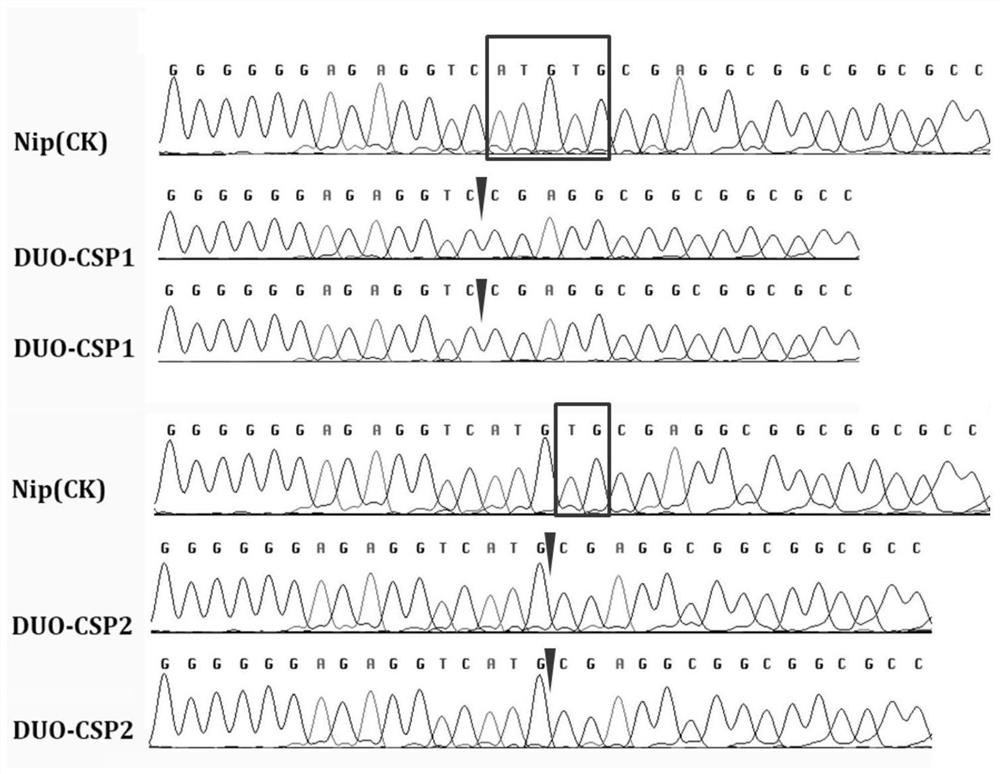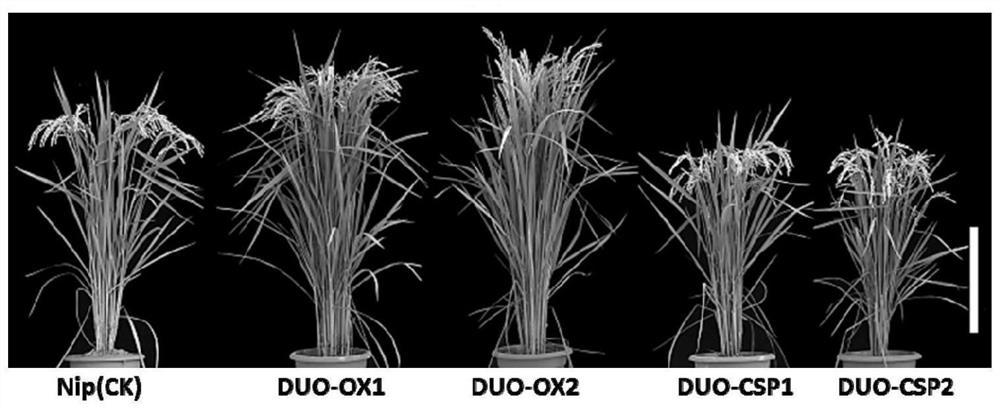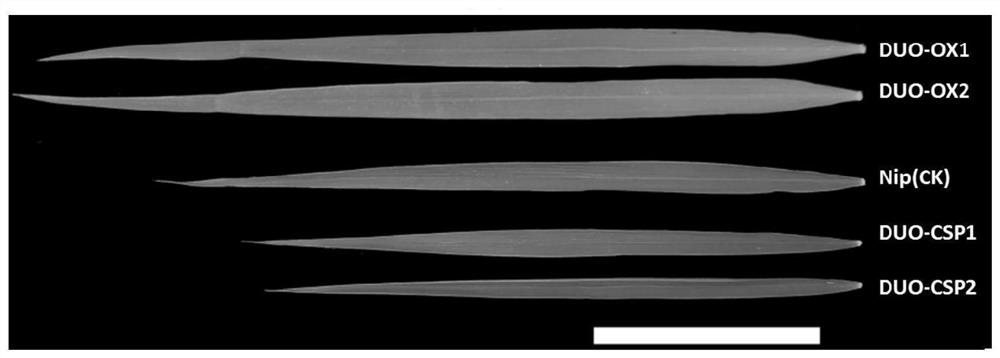Gene for regulating grain number per ear and application thereof
A technology of grain number per ear and gene, which is applied in the field of gene regulation of grain number per ear and its application field, can solve the problem that the total yield is difficult to maintain the growth trend
- Summary
- Abstract
- Description
- Claims
- Application Information
AI Technical Summary
Problems solved by technology
Method used
Image
Examples
Embodiment 1
[0174] Example 1, Validation and screening of DUO transgenic plants
[0175] Combined with the results of PCR identification and phenotype investigation, we screened two single-copy independently transformed DUO gene overexpression transgenic lines (DUO-OX for short), DUO-OX1 and DUO-OX2, whose T2 generation homozygotes were used for further analysis. Character investigation.
[0176] For the transgenic lines that use the CRISPR / Cas9 system to edit the DUO gene (DUO-CSP for short), we identified two edited independent lines by PCR and sequencing, DUO-CSP1 and DUO-CSP2, which have different The genotype was edited at the position of target 1, namely ggggagaggtcatgtgcga (GG). The DUO-CSP1 line has a 5 bp (ATGTG) deletion in the CDS region, and the DUO-CSP2 line has a 2 bp (TG) deletion in the CDS region, both of which lead to the displacement of the encoded protein frame and the loss of DUO protein function. ( figure 1 ).
Embodiment 2
[0177] Example 2, the up-regulated expression of DUO gene can increase the number of grains per panicle and yield per plant
[0178] The important agronomic traits were investigated on the DUO gene overexpression transgenic line (DUO-OX) and the gene editing knockout DUO gene transgenic line (DUO-CSP) grown in the Songjiang field, and the control Nipponbare plants were also investigated. The inspection items include plant height, length and width of flag leaves, number of tillers, ear traits (ear length, primary branch, secondary branch number and grain number per ear). , DUO-CSP and Nipponbare yield per plant.
[0179] We found that, compared with the control Nipponbare, DUO-OX plants were significantly higher than those of Nipponbare in terms of plant height, flag leaf length and width, ear length, number of primary branches, number of secondary branches and grains per ear. In contrast, DUO-CSP showed that all traits were significantly lower than those of Nipponbare, indica...
Embodiment 3
[0184] Example 3, DUO gene expression pattern and verification of DUO expression level in transgenic plants
[0185] We used mRNA in situ hybridization technology to determine the expression pattern of DUO gene in rice inflorescence development, branch development and spikelet development. There is relatively strong expression in granule primordia, and strong expression in young leaf primordia and microtubule primordia ( Figure 5 ), this expression pattern is very consistent with the transgenic phenotype, again indicating that the DUO gene is a positive regulator of growth and development, and its up-regulated expression can increase the number of grains per panicle, thereby increasing the yield per plant.
[0186] We identified the expression of DUO gene in young panicles ( Image 6 ). The expression level of DUO gene echoed its phenotype, indicating that the expression level of DUO gene had a significant positive correlation with yield.
[0187] Sequences covered in this p...
PUM
 Login to View More
Login to View More Abstract
Description
Claims
Application Information
 Login to View More
Login to View More - R&D Engineer
- R&D Manager
- IP Professional
- Industry Leading Data Capabilities
- Powerful AI technology
- Patent DNA Extraction
Browse by: Latest US Patents, China's latest patents, Technical Efficacy Thesaurus, Application Domain, Technology Topic, Popular Technical Reports.
© 2024 PatSnap. All rights reserved.Legal|Privacy policy|Modern Slavery Act Transparency Statement|Sitemap|About US| Contact US: help@patsnap.com










